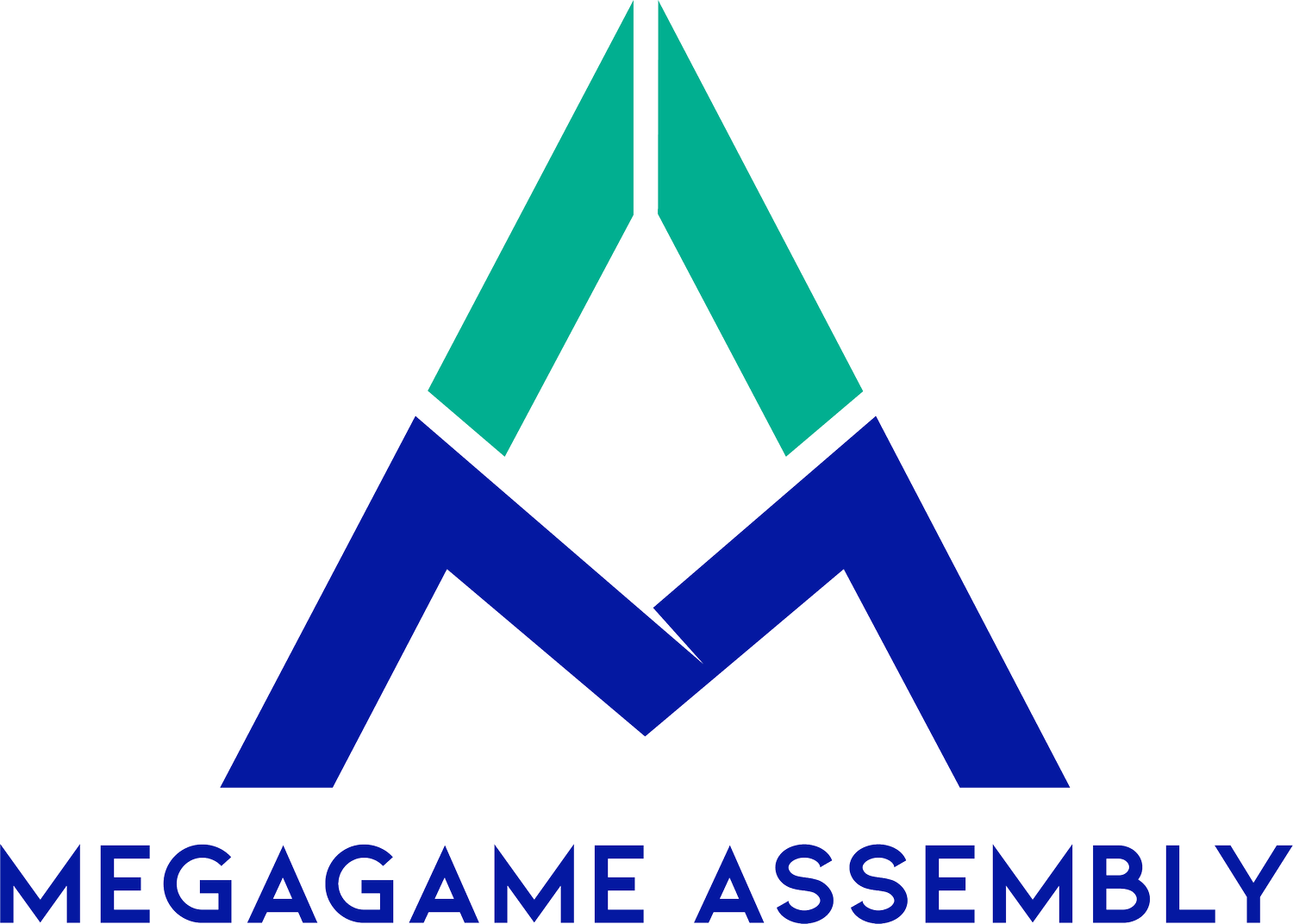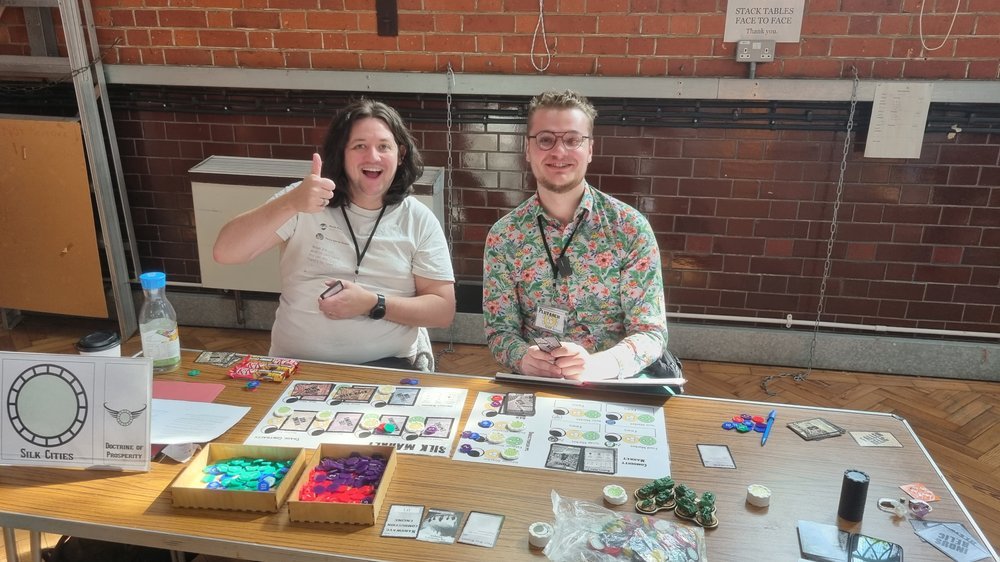Megagame Designer Thoughts: Relics of the Fall
A…giant mech at Relics of the Fall? Photo by: John Keyworth
In these articles we have a chat with designers after their games have run, to talk a bit about their experiences, thoughts, and any general pearls of wisdom they may wish to impart. This time we’ve been talking to John Keyworth of Kiwi Game Design about his post-apocalyptic game of rival tribes, an overbearing empire, and MECHS.
Tell us a bit about yourself – how did you get into megagames?
For me it was not via the Shut Up and Sit Down video, but some people from an old D&D group who pointed a megagame out to me – that was Watch the Skies in Oxford in 2016. It seemed like a good thing, but I didn’t go to another for a year so you could say I had a slower start than some? The Wide Area Megagame (Urban Nightmare: State of Chaos) got me hooked up deeper into megagames!
How do you think your most recent run of Relics of the Fall went?
If you asked me during the morning of the game it would have been “ARGH I HATE IT”, as people weren’t getting into it straight away. Some seemed to be ambling and disengaged, but then after an hour or two people got into the swing of things! It all took off and went really well; a lethargic formless start coalesced into the usual levels of hi-jinks you’d expect from a megagame..
There’s also a slight arbitrary-ness of what is a megagame, as this was on the smaller side in terms of numbers, but I’d say it was still a megagame. After all, it’s more about the chaos and not knowing what’s going on!
Megagames need drive and enthusiasm from a designer – what excited you about creating Relics of the Fall?
The theme and history came first, then mechanics after, which is how it worked out – worldbuilding before, how it all worked after.
Thumbs-up from engaged players at Relics of the Fall. Photo by: John Keyworth
Relatedly, what was influential in designing Relics of the Fall?
Initially The Art of Not Being Governed by James C Scott; it’s an anarchist history of South East Asia, and how the region has interacted with various empires. The origin story for this was me wanting to challenge the “march of progress” narrative around a lot of history. I brought it to Reading Megagames and offered it as a straight historical version, or alternatively as a Mad Max meets Warhammer 40,000 meets Dune mashup, including stompy combat mechs, and they wanted the latter so that’s what we went for!
Players have a habit of doing unexpected things – from your last run of the game, did anyone do something you hadn’t considered, and how did that go?
I try not to have expectations of players beforehand – I’ve been running games for long enough to know they’ll go off the beaten path. We had, in the second run, a lot more focus on the weirdness of the world and interesting things for the players to interact with. I believe you should give Control some content to play with and let them get on with it, it’s the best way to run a game.
For the third game, we gave the players these spirits things to play with (Maiden, Mother, Crone, etc.), but then the fourth spirit (the Deluge) represented apocalypse and imminent bad things. With elements tied into this (a big tower, a big dam, etc.), assorted players blew up and dismantled these game elements, through both accident and design, which then led to a player becoming the prophet of this fourth spirit as part of a big plan to cause catastrophic flooding against their Imperial enemies! Of course, it didn’t end like that, but megagames are rarely straightforward.
That was very involved in a twisty-turny way, as players dismantled the plot, and then put things back on course.
With multiple runs of Relics of the Fall – what’s changed in the game?
The most significant change was from the first run of the game – we had two maps, one of which was for the Wilders (hill tribes), and the other was a closed map so people didn’t know what was going on. This was too complex and made things harder for Control, so we learnt from that.
Subsequently we used face down counters for hidden movement for the maps, rather than use a closed map so things were still hidden but not so labour intensive for us running the game.
I also stripped some rules from the second game that didn’t get used, and then added a bunch of cards that included locations, NPCs, etc., then there was also the Imperials getting berated by the Imperial Capital which was done via cards!
This is part of a whole approach around having items and artefacts that people can bounce off for freeform play (control towers, items, relics which were now cards instead of small tokens), so items that are relevant can be deployed in the right situations with a bit of thought.
The nice thing about analogue game design is that it limits you. Brains have a certain amount we can hold together and understand, so it’s a good way to design simple mechanics for gameplay that people can grok. Maybe that’s just me!
I’ve also got to mention that Barbara (John’s partner) did a good job playing three seers/prophets with some costume changes – that was different.
The goergous map at Relics of the Fall. Photo by: John Keyworth
Player buy-in is great – costumes, role-playing, and genuinely caring about the game’s outcome! How do you think you can help yourself to get this buy-in from players?
This is probably something that Relics has struggled with a bit, in that it’s not got a very easy to grasp elevator pitch and setting, despite a lot of familiar elements in there… but it’s hard to explain succinctly! Signups can be slow compared to other games, like Fae’s Anatomy – a MAGIC HOSPITAL gives immediate knowledge of the game type and sets expectations. It’s very clear at communicating what you’re doing.
This is where Relics struggles a bit, because there’s so much with its backstory. I think this is probably a strength where once you’re in the game people get enthusiastic, as once players see how things work, experience different relationships, etc., that draws them in. A lack of clear opening scenario can make things tougher.
We all have lists of games we’d like to make, and some of these end up actually bearing sweet megagame-flavoured fruit – what are you working on for your next game design?
My design list is at 40 – I have a certain number and then when I put a new one in, I delete an old one. The next game will be what I wanted to run just as the pandemic hit – Club 1927, a game with Prohibition era gangsters in a made-up US city as one last hurrah prior to the Great Depression.
I had a design that works reasonably well, and I think it’s now moving in a good direction for design and further playtest.
If resources and time were no object, what would be your dream megagame to design?
I think I’d subvert the question slightly – I want to focus on smaller and more directed designs. My current thinking is more like my design for Raven Banner (Vikings in England), and trying to strip things back and streamline them to the point they’re very tightly designed. All the time and resources in the world wouldn’t improve that, but it would mean I could make ten of those, and ideally the tenth would be amazing!
Making games so simple you can just turn up and play. Paid playtesting would also be something I’d do if I had a budget. Making it better, not bigger.
For anyone looking at designing a megagame, what is your one top tip for them?
It’s hard to come up with just one – so I’ll pick one based on what we’ve been talking about, on sizes of games.
Make sure there’s no dead weight in a game, so in the third run of Relics of the Fall I was taking stuff out! Sometimes when you think about something, it turns out you do need it – and don’t be afraid of assessing that. But sometimes it’s not needed, which goes for the roles the same as for the mechanics – do players have agency, etc.? If you can’t fix it, cut it.
Someone’s spending a day of their life doing this, so let them have fun.
Thanks John for letting Rob talk to you after Relics! His game ran with Reading Megagames and we’re sure they’d pass any messages on to John if you contact them.
Designed and run a megagame that you’d like to talk to Rob about? Get in touch and we can facilitate your words appearing here!



